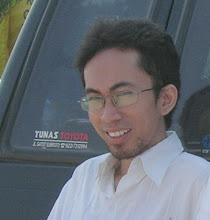 One of the principle aims of the Kayan Mentarang Project in East Kalimantan is reconcile the needs and priorities of nature conservation with those of people living around the nature reserve. To this end, WWF and its partners are applying concept from Unesco's worldwide system of protected areas, called "biosphere reserve", that incorporated local, often traditional land-use and management practices with nature conservation and, where appropriate, cultural preservation.
One of the principle aims of the Kayan Mentarang Project in East Kalimantan is reconcile the needs and priorities of nature conservation with those of people living around the nature reserve. To this end, WWF and its partners are applying concept from Unesco's worldwide system of protected areas, called "biosphere reserve", that incorporated local, often traditional land-use and management practices with nature conservation and, where appropriate, cultural preservation. WWF has proposed that this approach be implemented in Kayan Mentarang in the context of establishing a new national park and buffer zones.
The old conservationist approach of trying to isolate nature from people is being replaced with a more flexible a realistic willingness to work together with local communities to protect natural resources together with the human lives and livelihoods they sustain. Nature conservation for the sake of nature alone is not a viable concept. The conservation is not for nature alone, or only for the pursuits of natural scientists. It is for the common good of the whole world, of which humanity and human science are a part. Conservation science therefore must explore ways in which protection of nature and people's economic well being can be achieved together.
Some of these ways may be found through study of traditional knowledge and practices of people who lived for generations close to nature, such as the Dayaks of interior Kalimantan. This is especially true of people living near protected areas, as their detailed knowledge of the local flora, fauna, and environments can be directly applied to managing those areas. WWF has for several years been supporting and carrying out ethnobotanical, ethnozoological, and human ecological studies among Kenyah and other peoples living near Kayan Mentarang, focusing on such areas of knowledge and resources use such as medicinal plants, hunting and fishing, rattan silviculture and handicrafts, house building, management of agricultural land and traditional rice varieties, and local forest protection under customary law (adat). The object of these studies is not simply to document the existing knowledge and practices, but also to identify ways to incorporate these into management of the protected area and its buffer zones.
An example of traditional conservation management is the protected forest lands (tana'ulen) and streams (sungai ulen) maintained by most Kenyah Villages in the region. These village forest reserves provide a multitude of useful products for the people's subsistence and for commercial trade. The forest land also include many steep slopes where agriculture, if allowed, might lead soil erosion. WWF is now mapping these traditional protected areas and the resources they contain. This is being done together with the people of villages as part of participatory approach called "primary environmental care", that is, conservation by and for the people. It is hoped that this approach will lead to community-based conservation and local resource management in the framework of a new Kayan Mentarang National Park.






0 comments:
Post a Comment